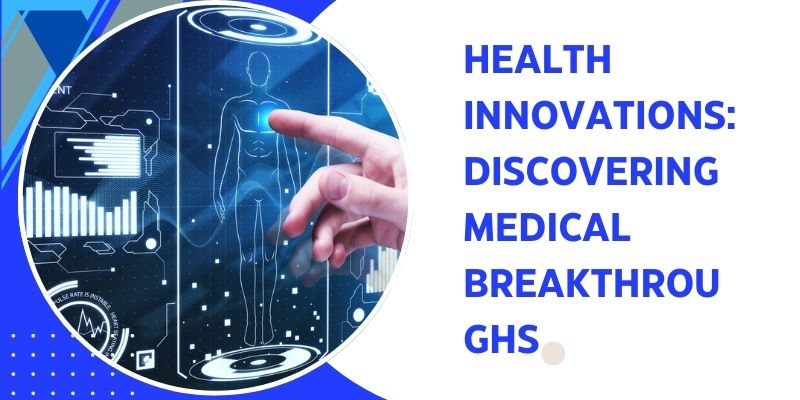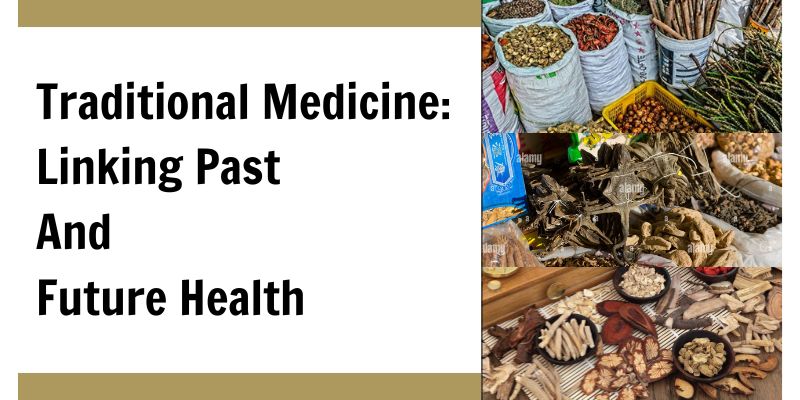The continuous advancements in technology and science have brought significant innovations in the medical field. From improving treatment methods to high-tech applications in healthcare, Health Innovations are transforming how we understand and manage health. In this article, we will explore some prominent trends and advanced technologies shaping the future of healthcare.
Progress in Medical Technology
1. AI and Machine Learning
Artificial Intelligence (AI) and Machine Learning are being widely applied in healthcare, from disease diagnosis to predicting epidemic outbreaks. AI can analyze massive amounts of data, helping to detect early-stage diseases and make more accurate treatment decisions. For instance, AI systems can detect cancer at earlier stages than traditional methods, improving patient survival rates.
- Medical Imaging Diagnosis: AI can analyze medical images such as X-rays and MRIs to quickly and accurately detect abnormalities.
- Epidemic Prediction: AI helps track and predict epidemic outbreaks, enabling healthcare authorities to prepare and respond timely.
Moreover, AI-driven applications can assist in streamlining administrative tasks in healthcare facilities. From scheduling appointments to managing patient records, AI is helping to enhance operational efficiency and reduce human error. For example, natural language processing (NLP) algorithms can transcribe doctors’ notes and update patient records automatically, saving time and effort.
2. Gene Technology
Gene technology, particularly CRISPR, is opening new possibilities for treating genetic diseases and cancer. CRISPR allows scientists to precisely edit genes, eliminating or repairing disease-causing genes.
- Cancer Treatment: CRISPR can be used to develop personalized cancer treatments, targeting cancer cells without affecting healthy cells.
- Genetic Disease Treatment: Gene technology helps treat genetic diseases such as cystic fibrosis, Huntington’s disease, and other conditions by editing faulty genes.
Additionally, advancements in gene sequencing are making it possible to identify genetic predispositions to various diseases. This information can be used to develop personalized preventive strategies and interventions, reducing the risk of disease development. For example, individuals with a genetic predisposition to cardiovascular diseases can receive tailored lifestyle recommendations and medical monitoring to mitigate their risk.
3. Telemedicine
Telemedicine has become a crucial part of modern healthcare, especially during the COVID-19 pandemic. Telemedicine allows patients to access healthcare services without visiting hospitals or clinics.
- Online Consultations: Patients can meet doctors via video calls, saving time and reducing infection risk.
- Remote Health Monitoring: Wearable devices and mobile applications help monitor patients’ health indicators remotely, providing continuous data for doctors.
Telemedicine has also facilitated access to specialist care for patients in remote or underserved areas. Through telehealth platforms, patients can receive expert consultations from top specialists without the need to travel long distances. This has been particularly beneficial for managing chronic conditions and providing timely interventions.
4. Wearable Health Technology
Wearable health technology, such as fitness trackers and smartwatches, has revolutionized how individuals monitor and manage their health. These devices monitor several health metrics, such as heart rate, physical activity, sleep patterns, and more.
- Continuous Health Monitoring: Wearable devices provide real-time data on health metrics, allowing users to make informed decisions about their health.
- Health Insights: The data collected by wearables can be analyzed to provide personalized health insights and recommendations.
For instance, wearable devices can detect irregularities in heart rate, prompting users to seek medical attention before a potential issue escalates. Furthermore, fitness trackers encourage physical activity by setting goals and providing feedback on progress, promoting a healthier lifestyle.
New Trends in Healthcare
1. Personalized Healthcare
Personalized healthcare is a rapidly growing trend, based on using personal data and technology to deliver the most suitable treatment methods for each patient.
- Personal Data Analysis: Using genetic, lifestyle, and medical data to create personalized treatment plans.
- Technology Applications: Using healthcare apps and devices to monitor and manage personal health daily.
Personalized medicine also involves pharmacogenomics, the study of how genes affect an individual’s response to drugs. This knowledge allows healthcare providers to tailor medication regimens to each patient, maximizing efficacy and minimizing adverse effects. For example, patients with specific genetic markers may respond better to certain medications, leading to more effective treatment outcomes.
2. Medical Robots
Medical robots are increasingly used in surgeries, enhancing precision and minimizing complications.
- Robotic Surgery: Robots can perform complex surgeries with high precision, reducing recovery time for patients.
- Care Assistance Robots: Robots can assist in patient care, from administering medication to helping with mobility.
In addition to surgical applications, robots are being developed to assist in rehabilitation therapy. These robots can provide consistent and controlled movements, helping patients regain mobility and strength after injuries or surgeries. Robotic exoskeletons, for example, enable individuals with mobility impairments to walk and perform daily activities independently.
3. 3D Printing Technology
3D printing technology is making significant changes in healthcare, from printing tissues and cells to creating personalized medical devices.
- Printing Tissues and Cells: Scientists can print living tissues and cells, opening new opportunities for treating injuries and diseases.
- Personalized Medical Devices: 3D printing allows for the creation of medical devices tailored to individual patients, from prosthetics to surgical tools.
Moreover, 3D printing is being used to create custom implants and prosthetics that perfectly fit the patient’s anatomy. This level of customization improves the functionality and comfort of these devices, enhancing the patient’s quality of life. For example, 3D-printed dental implants and hearing aids are designed to match the unique contours of each patient, ensuring a precise fit and optimal performance.
Challenges and Opportunities
Despite numerous innovations in healthcare, there are still many challenges to address. Protecting personal data and ensuring cybersecurity are critical issues. Additionally, close collaboration between healthcare authorities, tech companies, and governments is necessary to ensure these innovations are effectively and sustainably applied.
- Data Protection: Ensuring the security and privacy of personal medical data is one of the biggest challenges.
- Interdisciplinary Collaboration: Collaboration between stakeholders is essential to ensure that new technologies are implemented effectively and bring maximum benefits to the community.
Furthermore, the cost of implementing advanced technologies can be a barrier for many healthcare facilities, particularly in low-resource settings. To address this, governments and organizations need to invest in infrastructure and provide funding to support the adoption of innovative technologies.
Ethical considerations also play a significant role in the deployment of health innovations. Ensuring that new technologies are used in a manner that respects patient autonomy and consent is crucial. For instance, the use of AI in decision-making must be transparent, and patients should be informed about how their data is used.
Conclusion
Innovations in healthcare are opening up new opportunities and potentials in health management and disease treatment. From artificial intelligence and gene technology to telemedicine and wearable health technology, these breakthroughs not only improve quality of life but also bring hope to millions of patients worldwide. However, to ensure these innovations are effectively and sustainably applied, close collaboration between stakeholders and special attention to security and ethical issues are required.
Stay tuned to the Health Innovations category for the latest updates on technologies and innovations in the healthcare field. The continuous development of science and technology will continue to bring advanced solutions and new hope for our health future.

